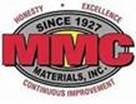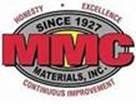Information
-
PLANT / FACILITY LOCATION
-
Conducted on
-
INSPECTION CONDUCTED BY
-
PLANT OPERATOR
HAZCOM
-
Typed Inventory of chemicals are in the MSDS / SDS Book. MSDS / SDS are filed in same order as chemical inventory list in HAZ COM Plan and Health & Safety Manual.
-
Containers are labeled correctly and legibly (Properly discard any containers not being used)
-
Police, fire, medical, spill emergency numbers and evacuation plans are posted in a conspicuous place.
-
Eye was station ( required if 15 minutes of continuous water flow is on first aid section of MSDS / SDS Sheet for a chemical). A copy of operator's manual is on file which provides instructions on procedures for proper maintenance of eye was station.
-
MSDS SHEETS AVAILABLE UPON REQUEST notice is posted in a conspicuous place.
FIRE
-
Fuel tanks are labeled properly and placard "NO SMOKING" and "FLAMMABLE"
-
Warehouses and storage rooms are neat and orderly with at least a three (3') foot aisle clearance.
-
Fire extinguishers mounted properly with proper signage and located in but not limited to fueling areas, warehouses and storage rooms, mechanic shops, mixer trucks, and heavy industrial equipment; tagged and maintained once per year by a fire equipment company; inspected monthly and documented by the designated employee.
-
All doors and exits marked properly - "EXIT" and "NOT AN EXIT." Exits are free from obstacles.
-
Empty containers not limited to motor oil, hydraulic oil, brake fluid, transmission fluid, and gas stored in designated areas away from flammables. Containers of soiled rags and paper products located in areas designated away from flammables.
-
Flammables and corrosives stored in separate rooms.
-
Metal Safety cans with flashback protection are used for gasoline and are properly labeled and stored.
FIRST AID
-
First aid cabinet is accessible to employees and supplied properly. (List of required items on file)
MACHINE GUARDS
-
Guards are properly attached on exposed moving parts on machinery / equipment, not limited to fans, conveyors, pulleys, compressors and motors.
FALL PROTECTION
-
Open pits covered or guarded and marked "CAUTION OPEN PIT"
-
Silos have ladders with enclosed cages
-
Silos have cables attached
-
Top rails, mid rails, and toe boards on work areas four feet (4') or higher.
-
Cat walks on conveyors.
-
Facility equipped with fall protection equipment ? Training?
-
Hand rails on stairs with four (4) or more risers. Risers are in good condition with no tripping or fall hazards.
-
Openings are guarded with standard rails except for entrance and exit.
ELECTRICAL
-
Circuit breaker boxes are properly labeled and covered with no exposed openings (Tape cannot be used to cover exposed openings)
-
Electrical Outlets are properly covered with no exposed wires.
-
Equipment and machinery checked for exposed wires and covers.
-
Electrical wiring is enclosed in conduit.
-
Junction boxes are properly covered and labeled.
-
Buildings and storage bins are grounded.
-
High voltage boxes labeled "HIGH VOLTAGE" and have three (3) foot clearance for proper access. Items and/or materials cannot be stored in or around electrical boxes.
-
Extension cords checked for damage and stress around plugs. Extension cords connected together are the same gauge. Extension cords cannot be run through holes in buildings for electric power and are to be used for temporary power service only. Do not try to repair extension cords with electrical tape.
-
Lockout / Tag Out procedures for equipment and machinery are filed with Lockout / Tag Out program in Safety & Health Manual.
CONFINED SPACE
-
Confined spaces are properly marked "CONFINED SPACE"
-
Entry procedures for confined spaces are filed in Confined Space program in Safety & Health Manual.
-
Mixer drum cleaning is conducted by company employees? If yes, employee is required to be trained in accordance with OSHA regulations and company safety policies on permit required confined spaces. IF NO, a certificate of insurance is required to be on file at the main area office.
PPE
-
Personal Protective Equipment is stored properly according to manufacturer's recommendations.
-
Facility has been marked with required PPE signs.
HOUSEKEEPING
-
Facility Site
-
Drivers Room
-
Housekeeping media
REQUIRED DOCUMENTATION
-
5-in-1 poster displayed in accordance with OSHA regulations.
-
Applicable State documents, Current Worker's Comp Notice, Safety Awareness - Plant Manager's Notes posted
EQUIPMENT
-
TYPE OF EQUIPMENT
-
LIST VENDOR AND MODEL
-
Fire extinguisher
-
Inspection Checklist
-
Backup Alarm Operational
-
Employees' Training on equipment is current.
ENVIRONMENTAL
-
General NPDES Permit Number
-
NPDES posted at plant?
-
Best Management Practices (BMP) posted at plant?
-
SPCC is required and has been completed by a PE if more than 1.320 gallons of diesel and oil stored on premises.
-
Is there any flow at the storm water outfalls?
-
Are process waters being discharged to the storm water drainage system?
-
Are the storm water controls adequate?
-
Are the process water controls adequate?
-
Are the storm water drainage system areas, drains, or outfalls clogged?
-
Is storm water contribuiting to pollution of nearby surface waters?
-
Are containers of chemicals stored without containment?
-
Are secondary containment areas fit to contain discharge?
-
Secondary Containment is sufficient to contain 110% of the capacity of the largest tank?
-
Does washwater from equipment washing have a potential to contaminate storm water outfall?
-
Daily inspection log completed properly; copy kept on file at plant and faxed to area Operations Manager for review
-
Monthly / Quarterly inspection checklist completed properly; copy kept on file at plant and faxed to area Operations Manager for review?
-
SWPPP (Storm Water Pollution Prevention Plan) files at plant?
-
Is the SWPPP being properly implemented according to terms of the permit?
-
Certification of Environmental Training
-
Facility has rain gauge
FORMS FILED IN PLANT BOOK
-
Daily Inspection Log
-
Clean Up Log
-
Spill Incident Report
-
Stormwater Drainage Log
-
Annual Dike Inspection
-
Annual Tank Inspection
-
Sample Collection
-
Sample Traceability
-
DMR's
-
Annual Stormwater DMR's (required in AL)
-
Monthly Baghouse Inspection
DMR's (Discharge Monitoring Reports)
-
Reports completed on timely basis according to specific state requirements.
-
Reports are signed and dated by responsible Manager.
-
Reports submitted to proper regulatory agency in a timely manner.
-
pH sample within the proper range
-
TSS (Total Suspended Solids) tested and does not exceed limits
-
Oil and Grease tested and does not exceed limits
-
Total gallons per day has been properly estimated and reported.
Plant Site Inspection
-
No eroded soils and other materials that will settle to form objectionable deposits in receiving waters
-
No visible debris, oil, scum and other floating materials leaving plant site
-
No suspended solids, turbidity, and color at levels inconsistent with the receiving waters.
-
No chemicals in concentrations that would cause violation of State Water Quality Criteria in receiving waters.
-
Plant's method for reclaim of lost concrete is satisfactory (e.g., crushed concrete)
-
Method for drying excess concrete does not cause environmental problems.
-
Spill Response Kit in order.
-
Other potential environmental concerns noticed at the plant site:
-
Tank Certification / Integrity Testing done on fuel tanks
-
Observing the last monthly / quarterly inspection checklist, were deficiencies or conditions identified corrected?
-
Any other media important to facility inspection
-
Plant Manager Signature
-
Area Manager Signature








